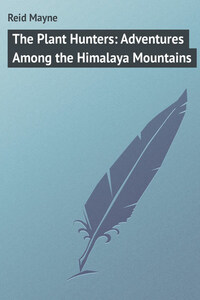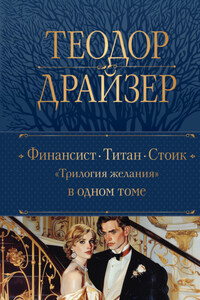Chapter One.
The Plant-Hunter
“A Plant-Hunter! what is that?
“We have heard of fox-hunters, of deer-hunters, of bear and buffalo-hunters, of lion-hunters, and of ‘boy-hunters;’ of a plant-hunter never.
“Stay! Truffles are plants. Dogs are used in finding them; and the collector of these is termed a truffle-hunter. Perhaps this is what the Captain means?”
No, my boy reader. Something very different from that. My plant-hunter is no fungus-digger. His occupation is of a nobler kind than contributing merely to the capricious palate of the gourmand. To his labours the whole civilised world is indebted – yourself among the rest. Yes, you owe him gratitude for many a bright joy. For the varied sheen of your garden you are indebted to him. The gorgeous dahlia that nods over the flower-bed – the brilliant peony that sparkles on the parterre – the lovely camelia that greets you in the greenhouse, – the kalmias, the azaleas, the rhododendrons, the starry jessamines, the gerania, and a thousand other floral beauties, are, one and all of them, the gifts of the plant-hunter. By his agency England – cold cloudy England – has become a garden of flowers, more varied in species and brighter in bloom than those that blossomed in the famed valley of Cashmere. Many of the noble trees that lend grace to our English landscape, – most of the beautiful shrubs that adorn our villas, and gladden the prospect from our cottage-windows, are the produce of his industry. But for him, many fruits, and vegetables, and roots, and berries, that garnish your table at dinner and dessert, you might never have tasted. But for him these delicacies might never have reached your lips. A good word, then, for the plant-hunter!
And now, boy reader, in all seriousness I shall tell you what I mean by a “plant-hunter.” I mean a person who devotes all his time and labour to the collection of rare plants and flowers – in short, one who makes this occupation his profession. These are not simply “botanists” – though botanical knowledge they must needs possess – but, rather, what has hitherto been termed “botanical collectors.”
Though these men may not stand high in the eyes of the scientific world – though the closet-systematist may affect to underrate their calling, I dare boldly affirm that the humblest of their class has done more service to the human race than even the great Linnaeus himself. They are, indeed, the botanists of true value, who have not only imparted to us a knowledge of the world’s vegetation, but have brought its rarest forms before our very eyes – have placed its brightest flowers under our very noses, as it were – flowers, that but for them had been still “blushing unseen,” and “wasting their sweetness on the desert air.”
My young reader, do not imagine that I have any desire to underrate the merits of the scientific botanist. No, nothing of the sort. I am only desirous of bringing into the foreground a class of men whose services in my opinion the world has not yet sufficiently acknowledged – I mean the botanical collectors – the plant-hunters.
It is just possible that you never dreamt of the existence of such a profession or calling, and yet from the earliest historic times there have been men who followed it. There were plant-collectors in the days of Pliny, who furnished the gardens of Herculaneum and Pompeii; there were plant-collectors employed by the wealthy mandarins of China, by the royal sybarites of Delhi and Cashmere, at a time when our semi-barbarous ancestors were contented with the wild flowers of their native woods. But even in England the calling of the plant-hunter is far from being one of recent origin. It dates as early as the discovery and colonisation of America; and the names of the Tradescants, the Bartrams, and the Catesbys – true plant-hunters – are among the most respected in the botanical world. To them we are indebted for our tulip-trees, our magnolias, our maples, our robinias, our western platanus, and a host of other noble trees, that already share the forest, and contest with our native species, the right to our soil.
At no period of the world has the number of plant-hunters been so great as at present. Will you believe it, hundreds of men are engaged in this noble and useful calling? Among them may be found representatives of all the nations of Europe – Germans in greatest number; but there are Swedes and Russ as well, Danes and Britons, Frenchmen, Spaniards, and Portuguese, Swiss and Italians. They may be found pursuing their avocation in every corner of the world – through the sequestered passes of the Rocky Mountains, upon the pathless prairies, in the deep barrancas of the Andes, amid the tangled forests of the Amazon and the Orinoco, on the steppes of Siberia, in the glacier valleys of the Himalaya – everywhere – everywhere amid wild and savage scenes, where the untrodden and the unknown invite to fresh discoveries in the world of vegetation. Wandering on with eager eyes, scanning with scrutiny every leaf and flower – toiling over hill and dale – climbing the steep cliff – wading the dank morass or the rapid river – threading his path through thorny thicket, through “chapparal” and “jungle” – sleeping in the open air – hungering, thirsting, risking life amidst wild beasts, and wilder men, – such are a few of the trials that chequer the life of the plant-hunter.














